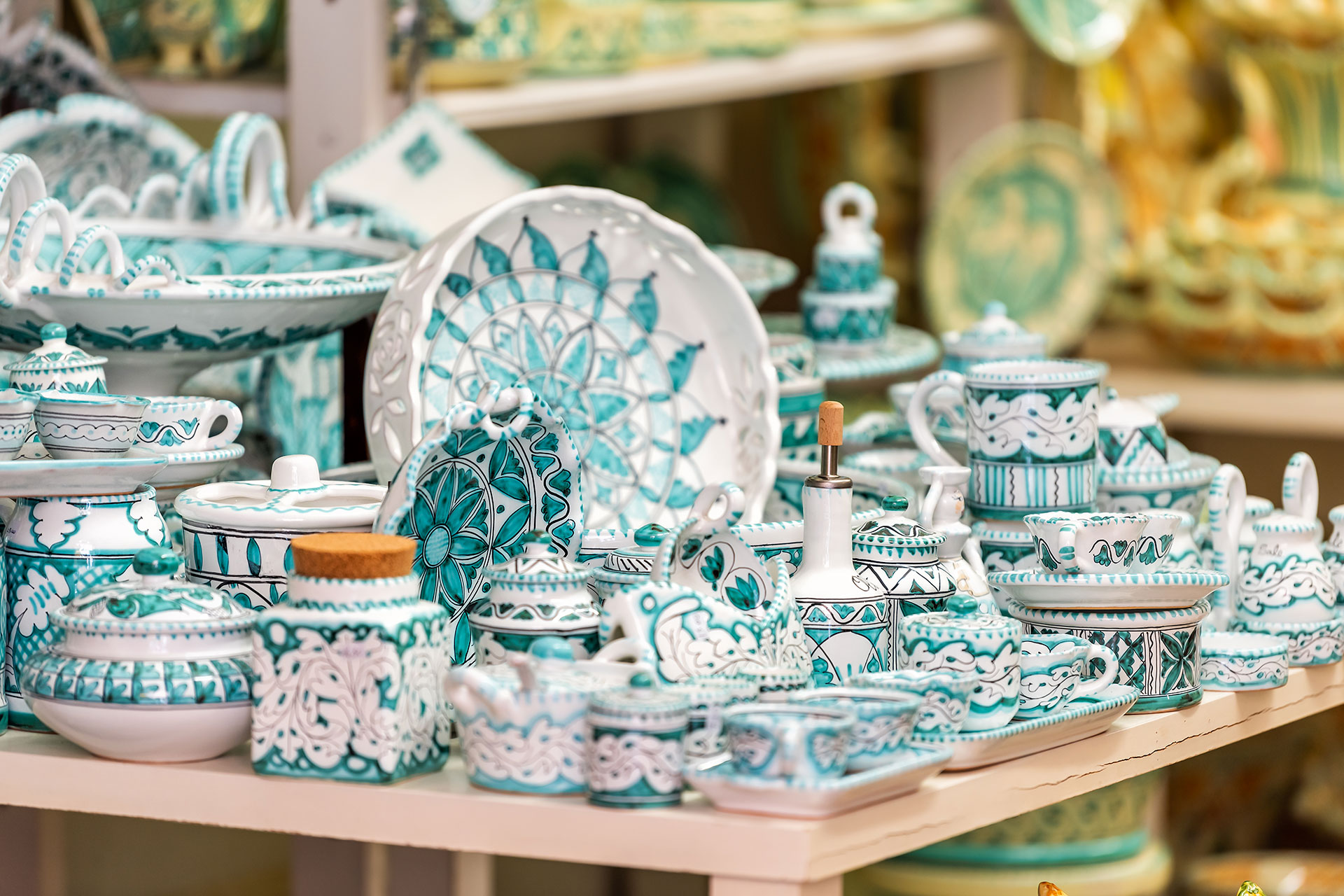Umbria has a great tradition linked to ceramic art. Thanks to the characteristics of the Umbrian territory, where the soil is rich in clay and there is plenty of water and woodland, Umbrian ceramics, over the centuries, developed greatly and led to the blossoming of a great number of centres dedicated to this sophisticated art. This ancient tradition is still alive in many Umbrian cities.
Ceramics: from simple trade to actual art
The word ‘ceramic’ comes from the Greek ‘Keramos’ which means clay. Ceramics, however, is not just a trade, it is an actual art. Unlike clay objects, in fact, ceramic items are painted: ceramic objects are not just tools, they become actual decorations for the home. Known since pre-historic times, the art of ceramics has its roots in the distant East, in Japan, and then spread across Europe.
Umbria and ceramics: an ancient tradition
The production of pottery in Umbria is documented starting from the 13th century and the use of this material, since time immemorial, demonstrating the talent of the Umbrian people in the production of ceramics. An important legacy that is conveyed through the presence of kilns, very plentiful across Umbria since the beginning of the last century. The industrial era and the globalisation of production led to many shops closing down, but just as many remain active in the area. Modern Umbrian shops also produce glazed pottery, intended for decorating sideboards and tables, and the most refined maiolica pottery.
The cities of Umbrian ceramics
There are a great many cities in Umbria where one can rediscover the ancient tradition of ceramics:
Deruta
The first to mention is the famous city of Deruta, where the development of the potter’s trade is recounted through objects dating back to the Roman era. Deruta’s Regional Museum of Ceramics is the oldest Italian ceramics museum. Located in the historical centre of Deruta, it houses more than 6000 works for visitors to admire.
Gualdo Tadino and Gubbio
Also, in Gualdo Tadino and Gubbio, over the centuries the ceramics production has been rich and prestigious. The findings of archaic maiolica pottery from the medieval era and the local talent for this craft made these two cities strategic points for the ceramics trade.
Bucchero ceramics of Orvieto
The thousand-year-old tradition of Orvieto is conveyed through the production of buccheri: a type of ceramic created on the potter’s wheel, with the main characteristic of being glossy black inside and outside the object. Buccheri were characteristic of Etruscan civilisation, which marked the history of the city with its presence.
The entire Umbrian area nevertheless hosts many artisan shops where you can admire the art of ceramics.
Riconoscimento editoriale fotografico: Kristi Blokhin / Shutterstock.com











Follow us on the socials